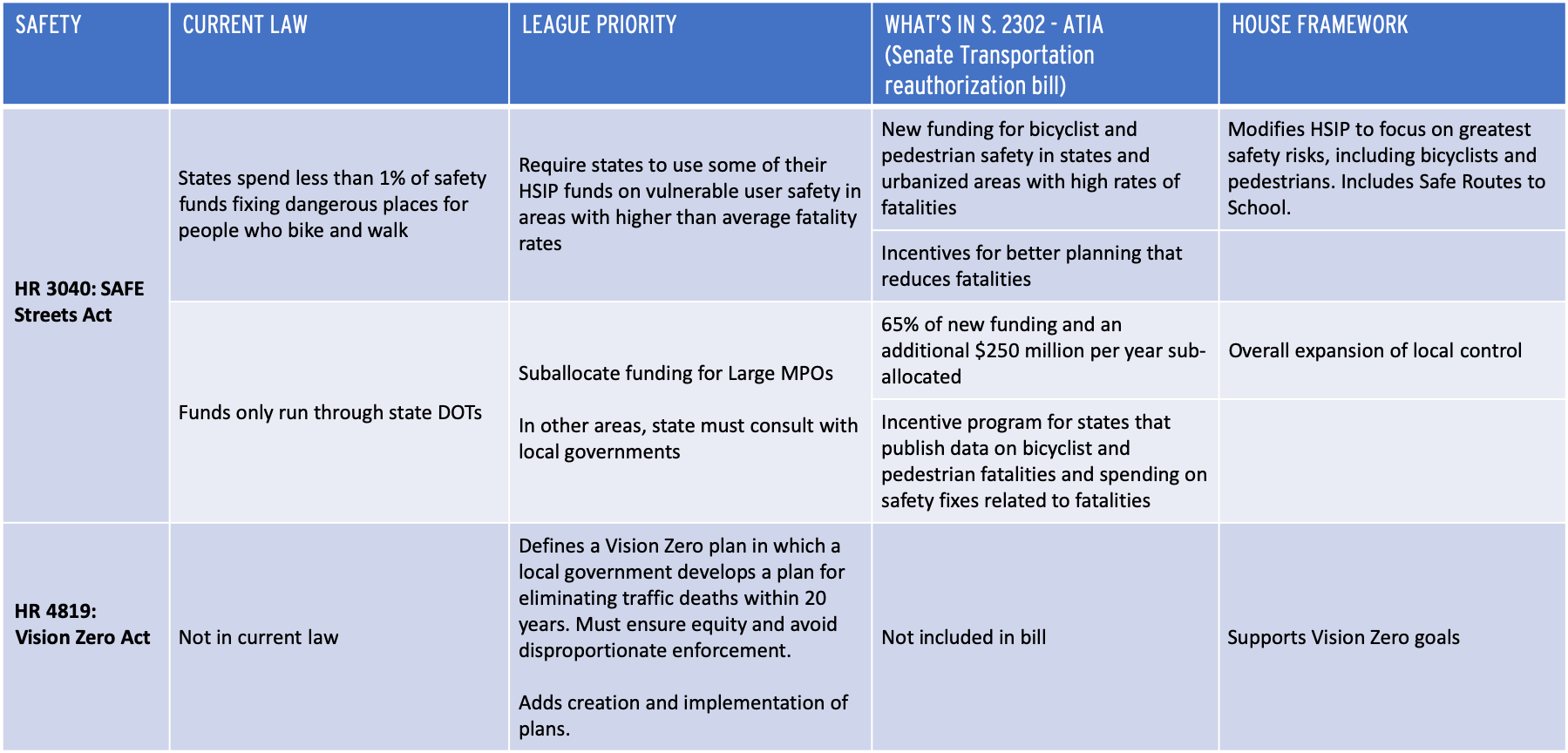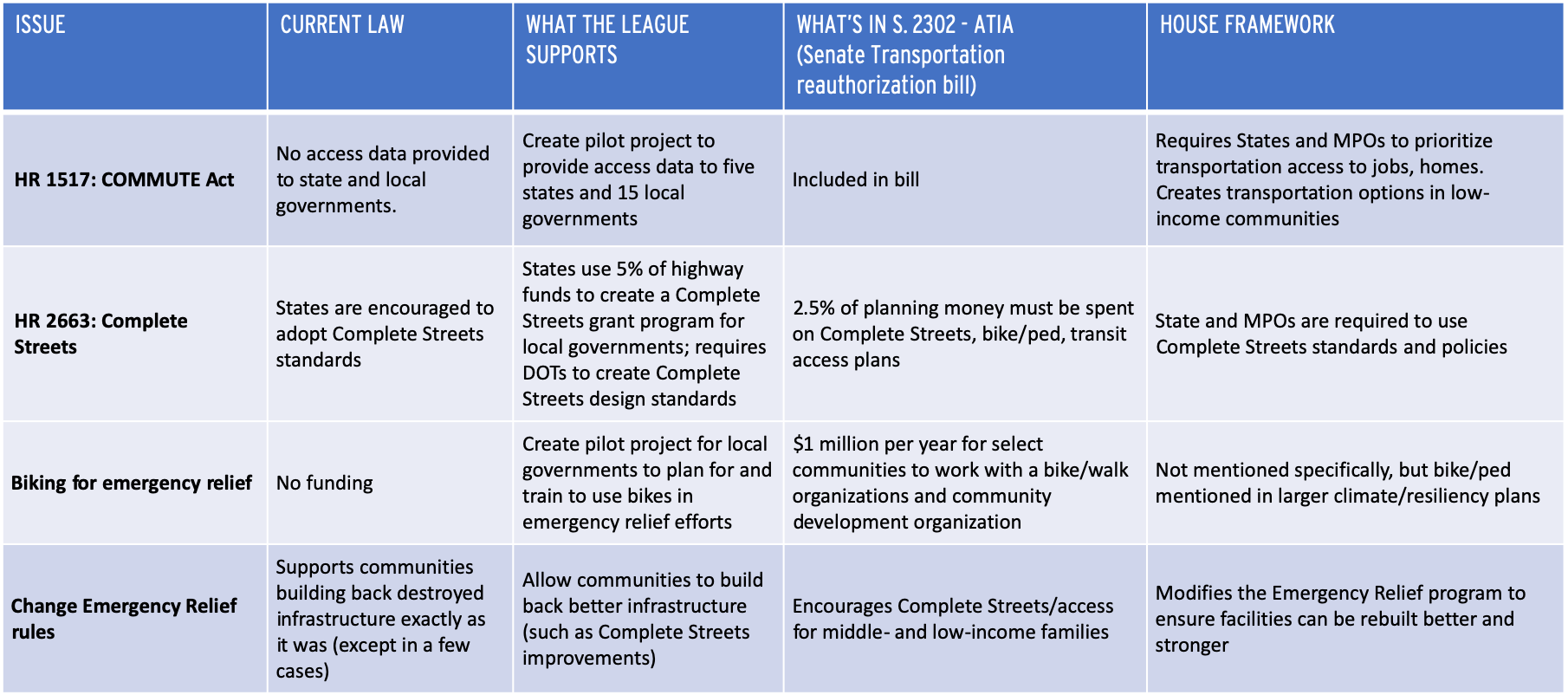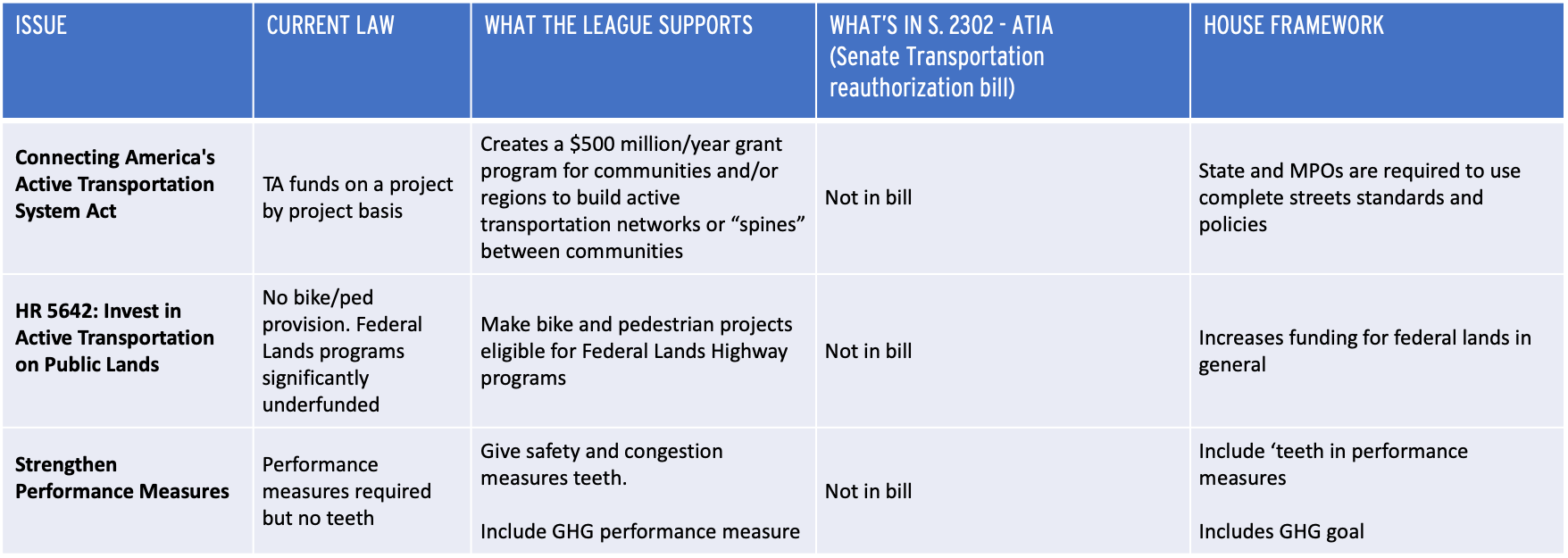DISCOVER YOUR LOCAL BICYCLING COMMUNITY
Find local advocacy groups, bike shops, instructors, clubs, classes and more!
A framework for infrastructure focusing on climate, safety and reform
When the Senate released their transportation bill last Summer, the League was relieved to see it included a number of items we had been pushing for: funding and policy improvements to Transportation Alternatives, a focus on bicycling and walking fatalities, as well as better planning tools. It also included the first ever climate title in a transportation bill. It was a great bill for bicycling. In blogging about the Senate bill, I did note an issue some transportation advocates highlighted:
“For advocates who were hoping for a complete revision of the transportation program, this bill is not that. The vast majority of the funding still goes to states through the existing formula programs. However, the addition of the climate title, the safety incentive programs and other new additions are a significant step forward to encouraging states and municipalities to plan and build differently.”
This morning, the House of Representatives released their framework – and while the devil will be in the details, the House framework promises a bill that builds on and exceeds the work of the Senate.
Why we’re excited:
- Better safety for bicycling walking. The bill revisits how the safety program works to ensure pedestrian and bicycling safety is addressed in a meaningful way.
- Promotes low carbon transportation by building biking and walking networks.
- Strong emphasis on local control and decision-making – the bill increases the power local governments have over projects in their district and provides technical assistance for local governments to build the best projects possible.
The House Framework calls for an increase in funding for bicycling and walking infrastructure, a focus on safer streets, and investment in carbon pollution reduction through alternative transportation. It also goes further by reforming the core transportation programs, something the Senate bill was unable to do. The framework for the House bill would require states and MPOs to implement complete streets policies, prioritize maintenance over new construction, promote performance-based investments, integrate carbon reduction throughout, and empower local governments.
One thing to note: The framework released today is not bipartisan but a Democratic vision of the next transportation bill, and infrastructure generally. It is also just a framework, but it is a great place to be starting from.
What we’re watching:
- How will this bill be funded? The House is committed to finding sustainable funding but hasn’t shared any concrete steps forward.
- The tension between local control (a Democratic priority) and state flexibility (a Republican priority) seems ripe for a battle that could slow the bill.
- Can Congress finish the bill before January 1? Both this House framework and the bill passed by the Senate last summer represent key improvements for bicycling infrastructure and safety. But if Congress fails to pass the bill this year, these bills expire and we’ll be back to step one.
Both Democrats and Republicans have stated their willingness to work together to create the next transportation bill, but how they agree on funding it will be a big part of moving it forward. Republicans on the committee have also released principles for the next transportation bill, some of which overlap with the Democratic framework, but a few Republican priorities are not addressed in the framework including ensuring state flexibility and streamlining project delivery.
Here’s a chart showing how the House framework stacks up against the League’s priorities.



